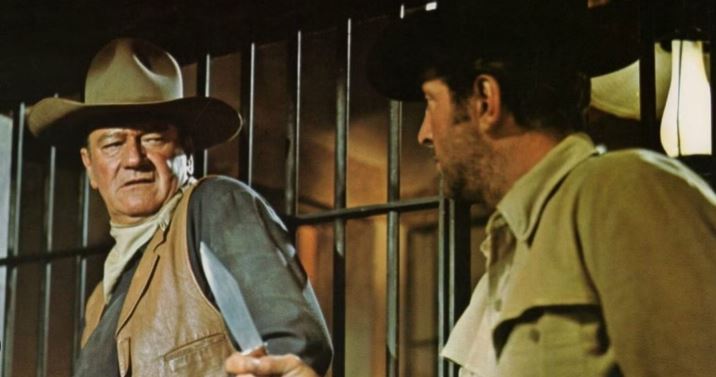Action movies have always relied on various registers of distinct visual grammar, whether it be the mindless explosions of Michael Bay or the subtle camera manoeuvres in martial arts flicks. In those famous sequences that put audiences on the edge of their seats, the editing plays as much of a role as the performances or the special effects.
This is something that was clear to auteurs even in the silent era, as directors like Georges Méliès used cuts to create magic on the screen while others, such as Buster Keaton, relied on comedic action segments that ingeniously elicited laughter. The importance of editing was clear to John Wayne too, right from the early years of his acting career.
Before he became the face of Hollywood by partnering up with John Ford and creating definitive westerns like The Searchers, Wayne worked with ‘Poverty Row’ director Robert North Bradbury in the 1930s who helped him realise the kind of cowboy image that he wanted to portray. As reported in Maurice Zolotow’s John Wayne biography, Shooting Star, Wayne wanted to move away from the innocent image of the American cowboy and create something of his own.

“They never drank nor smoked,” Wayne explained. “They never had a fight. A heavy might throw a chair at them, and they just look surprised… They were too goddamn sweet and pure to be dirty fighters… Well, I wanted to be a dirty fighter if that was the only way to fight back. If somebody throws a chair at you, hell, you pick up a chair and belt him right back. I was trying to play a man who gets dirty, who sweats sometimes, who enjoys really kissing a gal he likes, who gets angry, who fights clean whenever possible, but will fight dirty if he has to.”
This is definitely reflected in some of the early projects he worked on, but the most important contribution to the evolution of action cinema’s visual language that came from his collaborations with Bradbury was something called the “pass system”. Combining a specific shot angle with slick editing, it facilitated a more realistic simulation of fight scenes.
According to the Hollywood star, Bradbury “thought if he placed the camera at a certain angle, it would look as if my fist was making contact.” The ‘pass system’ ended up being a huge influence on the industry, as Wayne claimed that “other stuntmen and directors picked up on it, and it became the established way of doing a fight.”
What started out as the ‘pass system’ can also be observed in modern action flicks, allowing stars who want to do their own action sequences to avoid using body doubles. However, many contemporary productions choose to forego it all by cutting at the moment of impact, creating a hyper-fragmented segment that manages to retain the audience’s attention but is also significantly less immersive than the visual language implemented by Jackie Chan, for example, who jammed sequences with multiple stunts without cutting and ended up with one action masterpiece after another.
